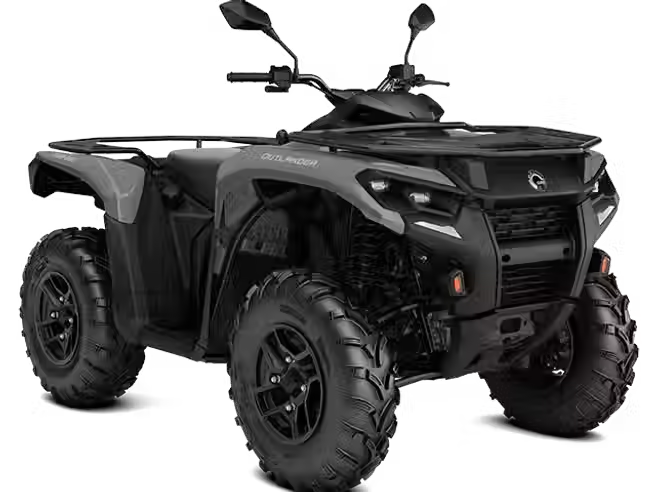How Big of a Brush Can a Flail Mower Cut?
- Beckside Machinery

- Jul 31, 2024
- 3 min read
Flail mowers are essential tools for managing overgrown vegetation, offering versatility and efficiency for various agricultural and landscaping tasks. One common question for those considering a flail mower is: how big of brush can a flail mower cut? Understanding the capabilities and limitations of these machines is crucial for selecting the right equipment and achieving optimal results. This article will explore the cutting capacity of flail mowers and provide insights into their proper use.
Understanding Flail Mower Design
Flail mowers are equipped with numerous small blades, or flails, attached to a rotating drum. As the drum spins, the flails swing outwards, striking and cutting vegetation with a chopping motion. This design allows flail mowers to handle dense, tough vegetation that other mowers might struggle with, such as tall grass, thick weeds, and brush.
Factors Determining Cutting Capacity
Several factors influence how large of brush a flail mower can cut, including:
Mower Size and Power The size and horsepower of the flail mower play a significant role in its cutting capacity. Larger, more powerful mowers are capable of handling thicker and denser brush compared to smaller models. Commercial-grade flail mowers, often used in agricultural and heavy-duty landscaping, can manage more substantial vegetation than residential-grade units.
Blade Type and Condition The type and condition of the blades are critical in determining cutting capacity. Heavy-duty blades designed for brush cutting are more effective at handling thick vegetation. Additionally, keeping blades sharp and well-maintained ensures they can cut through tougher brush without becoming damaged or worn out prematurely.
Vegetation Type The type of vegetation being cut also affects the mower's capacity. Flail mowers are typically designed to handle a variety of plant materials, but some may be better suited for certain types of brush. Soft, green vegetation is easier to cut than hard, woody stems and branches.
Ground Conditions The terrain and ground conditions can impact the cutting efficiency of a flail mower. Operating on uneven, rocky, or debris-laden ground can be more challenging and may limit the size of the brush the mower can effectively cut.
Typical Cutting Capacity
On average, a standard flail mower can handle brush and vegetation up to 1 to 2 inches in diameter. However, this can vary based on the factors mentioned above. Heavy-duty flail mowers, designed for more rigorous applications, can manage brush up to 3 inches or more in diameter. For instance, a powerful agricultural flail mower might handle small saplings and thicker branches that would pose a challenge for a lighter-duty model.
Optimising Flail Mower Performance
To get the most out of your flail mower and ensure it can handle the maximum brush size effectively, consider the following tips:
Choose the Right Mower Select a flail mower that matches your needs. If you anticipate cutting thicker brush regularly, invest in a more powerful, heavy-duty model designed for such tasks.
Maintain Sharp Blades Regularly inspect and sharpen the blades to maintain cutting efficiency. Dull blades can struggle with thicker brush and may cause the mower to work harder, leading to faster wear and tear.
Clear Large Debris Before mowing, walk the area to remove large debris such as rocks, logs, and other objects that could damage the mower or hinder its performance. This practice helps prevent accidents and maintains the integrity of the blades.
Adjust Cutting Height Adjust the cutting height to accommodate the terrain and vegetation density. A higher cutting height can help the mower handle thicker brush without becoming bogged down.
Operate at an Appropriate Speed Operating the mower at the correct speed is crucial for effective brush cutting. Too fast, and the mower may not have enough power to cut through thick vegetation; too slow, and it may cause excessive strain on the equipment.
Safety Considerations
When using a flail mower to cut brush, safety should always be a priority:
Wear Appropriate Protective Gear: Always wear sturdy footwear, long pants, gloves, and eye protection when operating a flail mower.
Inspect the Area: Ensure the area to be mowed is free of people, pets, and obstacles.
Follow Manufacturer Guidelines: Adhere to the manufacturer’s recommendations for operation and maintenance to avoid accidents and equipment damage.
Conclusion
Flail mowers are versatile and powerful tools capable of handling a wide range of vegetation, including substantial brush. By understanding the factors that influence their cutting capacity and following best practices for operation and maintenance, you can ensure your flail mower performs effectively and safely. Whether you’re managing a farm, maintaining a large property, or tackling heavy-duty landscaping projects, a well-chosen and properly maintained flail mower can be an invaluable asset in your arsenal of equipment.




Comments